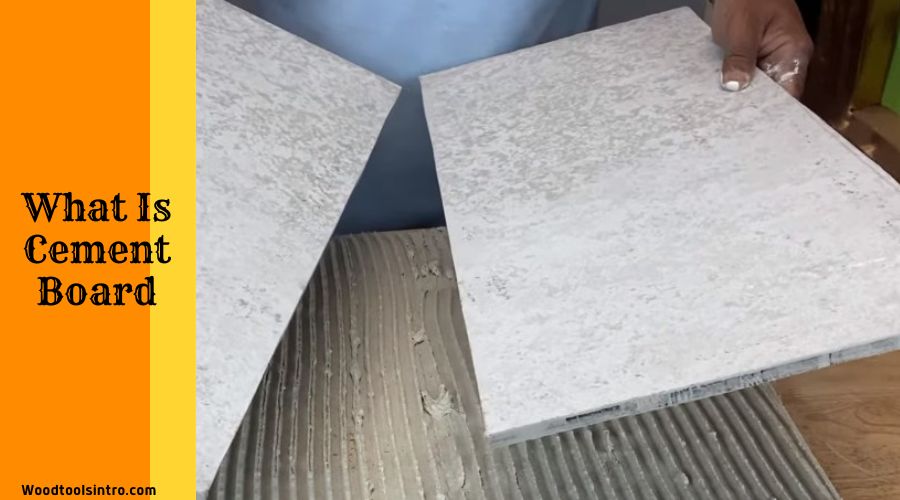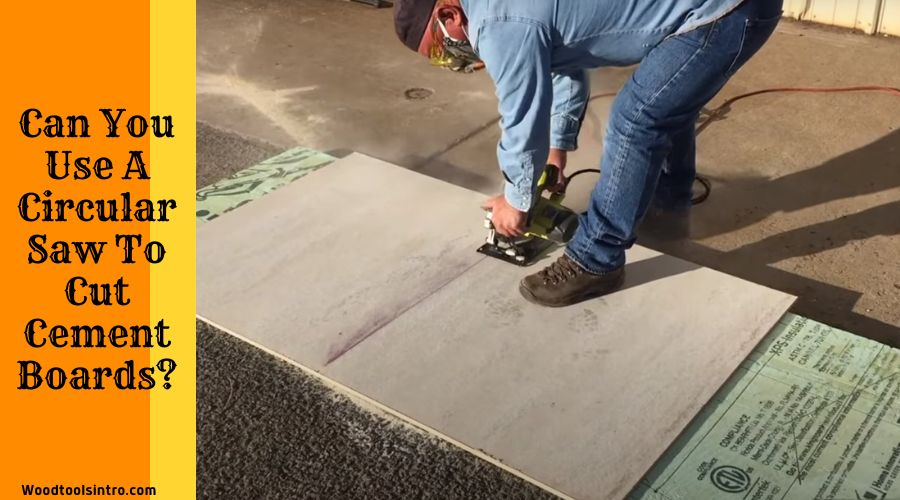Cement boards are tough material. Woodworkers generally use a jigsaw to cut it. You need a powerful metal-cutting blade or a carbide-grit blade that can withstand the strain of the cement.
But can you cut cement board with a circular saw?
Yes, cutting cement board with a circular saw is possible if you use the correct option and know the proper technique.
What Is a Cement Board?

Cement boards are made from a combination of cement and reinforcing fibers.
A sheet of cement board contains approximately 40%-60% cement, 20%-30% fillers, 8%-10% cellulose, and 15% mica.
They come in various dimensions, usually 4 feet by 8 feet. Their thickness level varies too from ¼ and ½ inch.
People generally use cement boards for walls, floors, and ceilings. They are resistant to water, mold, and fire.
But, their most common usage is sub-surface for tiling. Household owners widely use a tile base on plywood or OSB subfloor.
Can You Use A Circular Saw To Cut Cement Boards?

You can use a circular saw to cut cement boards. In fact, it can provide clean and faster cuts.
But following the correcting procedure and using a well-suited blade is crucial. Otherwise, cutting cement boards with a circular saw will be challenging.
After all, a power or automated saw is not the best choice for cutting cement boards because they often cause a dust hazard.
The best tool for cutting cement boards is a carbide-tipped scoring knife or similar utility knife.
You want to use a thin and sharp to avoid jagged edges and cracking or breaking the cement board.
However, when you have no option but to use a circular saw to cut a cement board, using it is not bad at all.
What Type of Circular Saw Blade Should You Use for Cutting Cement Board?
You can use two types of circular saw blades for cutting cement boards.
One of the most common options is a carbide-tipped cutting blade. It can withstand the strain of cutting ultra-tough materials
Carbide is a rigid and durable material. So, it can maintain a sharp cutting edge while handling tough and abrasive materials like cement board.
Another option is a metal cutting blade, well-known for its strength and rigidity.
Metal cutting blades are usually made from sturdier metal to cut metals or super hard objects.
However, the key is choosing an option with a few teeth on the blade to minimize the dust given off while sawing the cement board.
Related Article
How To Cut Cement Board With A Circular Saw (Step-By-Step Guide)
We will go over a step-by-step procedure for cutting cement boards swiftly using a circular saw.
Step: 01—Choosing An Appropriate Surface
Make sure to choose a stable and flat work surface. It will prevent the cement board from moving around.
Uneven or wobbly surfaces will result in an unstable or inaccurate cut.
Additionally, select an open space, as cement boards are large and heavy.
Having an open space to work in can make it easier to handle and maneuver.
It can provide more room to set up tools and equipment, making cutting more efficient.
Step: 02—Taking Measurement And Marking
The next job is measuring the cement board regarding how much you want to cut in what area.
You can use a tape measure, a T-shaped ruler, or folding rules to measure precisely.
Once you figure out how much to cut at some particular areas, mark them appropriately.
You can use a pencil, marking gauge, chalk line, or a lumber crayon/ marker to mark the area before cutting.
It will help you achieve perfectly accurate and straight cuts.
Step: 03—Adding A Dust Collection System
A compatible blade with a circular saw can minimize the dust. But it can’t completely eliminate it.
The best solution is adding a dust collection system. It effectively collects harmful, or nuisance dusts that would otherwise harm your health.
More importantly, it will prevent dust from building up on the blade and slowing down the cutting process.
Step: 04—Wearing Safety Equipment
Make sure to wear safety glasses or goggles or a face shield.
Also, wearing a certified respirator or dust mask is necessary to protect yourself from nuisance or harmful dust.
Protecting your body requires wearing chainsaw chaps or pants and suitable footwear.
If you are going to work in a boisterous area, use the correct hearing protection equipment to prevent noise-induced hearing loss.
Step: 05—Operating The Circular Saw
Finally, turn the plug in the cable of the circular saw and switch on the device.
Begin the cut by positioning the saw blade at the board’s edge, with the blade perpendicular to the board.
Slowly move it along the cut line, allowing the blade to cut through the cement board.
Move the saw at a consistent pace, and avoid pushing the saw too hard or too fast.
Cutting Cement Board Common Mistakes & How To Avoid Them
If you have not used a circular saw to cut cement boards in the past, mistakes are common.
The followings are common mistakes you are likely to make and how to tackle them easily.
01. Avoid Choosing Any Blade With Too Many Small Teeth
A saw blade with too many small teeth blade is not a good choice for cutting cement boards.
It will slow down the cutting speed and cause more friction and heat.
Choose a saw blade with fewer larger teeth to remove a larger amount of material with each pass.
It will be less prone to clogging and affect the blade’s efficiency.
02. Keep A Utility Knife
There might be some rough edges or corners while working a circular saw.
You can utilize a utility knife. Its sharp blade makes it perfect for precise and controlled cutting without damaging the surrounding area.
Achieving a clean and smooth surface is easygoing with a utility knife as it is easy to handle and maneuver.
03. Don’t Cut Too Quickly
Cutting cement boards requires patience and precision.
If you cut it too quickly, it can cause the board to crack or chip.
Take your time and make slow, deliberate cuts.
Wrapping UP
Are you still wondering, “Can you cut cement board with a circular saw?”
We have already covered what needs to be done to cut cement boards with circular saws.
It is better to practice on scrap materials before finally handling the main projects.

I am Imtiaj Islam. I am a wood working enthusiast, having 6 years of experience in carpentry work. I have a BBA graduate degree from Chittagong College. I got vocational training on wood works from Korean Polytechnic out of the quest and zest he has for carpentry as well. I take several wood projects and keep testing different woodworking tools for comfortable and perfect work. I just love playing with woods and machines.
